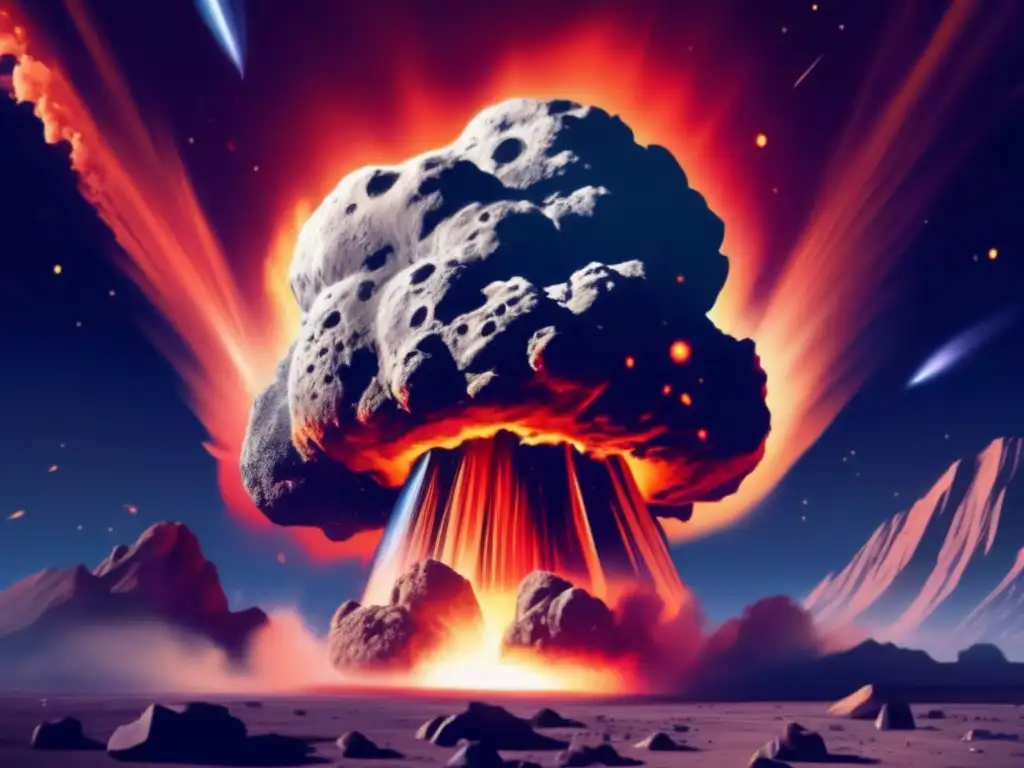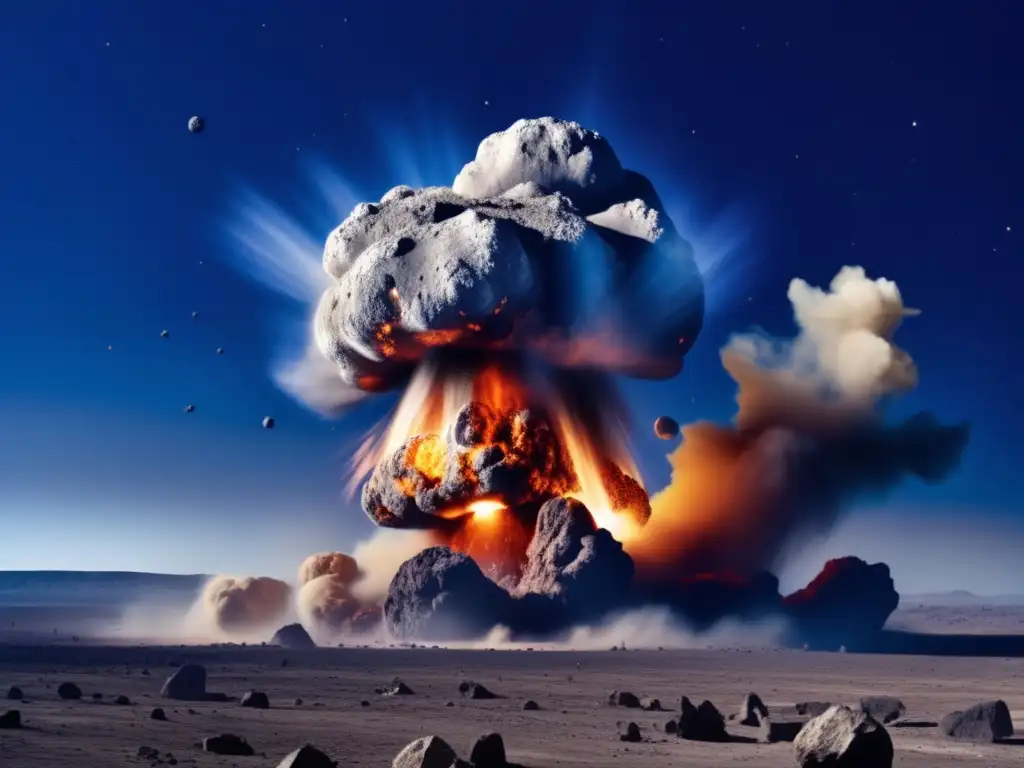Falling Skies: The Skywatcher’s Guide To Asteroid Impacts

Introduction
Asteroid impacts have been an integral part of Earth's history and, in some cases, have had catastrophic consequences. These celestial objects are fascinating in their own right and understanding them can help us to prepare for and prevent potential impact events. In this article, we will explore the intricacies of asteroid impacts, from their causes and effects to the technology used to detect and track them.
The Science of Asteroid Impacts

What Causes Asteroid Impacts?
Asteroid impacts are the result of a collision between Earth and an asteroid or meteoroid. These objects are typically leftovers from the formation of our solar system and are composed of rock, metal, and other materials. When they enter Earth's atmosphere, the friction causes them to heat up and break apart into smaller pieces, which may or may not reach the ground.
The Effects of Asteroid Impacts
The effects of asteroid impacts can range from minor to catastrophic, depending on the size and velocity of the object. Small objects may burn up in the atmosphere and cause no damage, while larger objects can create craters, release massive amounts of energy, and even cause global climate change. The most famous example of an asteroid impact is the one that led to the extinction of the dinosaurs approximately 65 million years ago.
Asteroid Impact Mitigation Techniques
While there is currently no way to prevent an asteroid impact, there are several techniques that can be used to mitigate their effects. One option is to deflect the asteroid using a spacecraft equipped with an impactor or gravity tractor. Another option is to destroy the asteroid using a nuclear device or other means. These techniques require careful planning and execution, as well as international coordination.
Tracking Asteroids

How Do We Detect Asteroids?
Asteroid detection is done using a variety of techniques, including ground-based telescopes, space-based observatories, and radar. Ground-based telescopes are used to detect asteroids at visible wavelengths, while space-based observatories can observe them at other wavelengths. Radar is used to detect asteroids that are too faint to be observed by other means.
Tracking Near-Earth Objects
Near-Earth objects (NEOs) are asteroids or comets that come within 1.3 astronomical units (AU) of Earth's orbit. These objects are of particular interest because they have the potential to impact Earth and cause significant damage. Tracking NEOs is an ongoing effort that involves many organizations around the world.
Tools Used to Track Asteroids
There are several tools used to track asteroids, including software that predicts their orbits based on observations, ground-based telescopes that observe them at different wavelengths, and spacecraft that travel to them and gather data. The data obtained from these tools is crucial in understanding the properties and behavior of asteroids.
Impact Preparedness

Emergency Response Plans
In the event of an asteroid impact, emergency response plans are essential to minimize damage and loss of life. These plans involve collaboration between government agencies, international organizations, and local citizens. They include measures such as evacuations, disaster relief, and public education campaigns.
Community Involvement
Community involvement is critical in ensuring that emergency response plans are effective and well-executed. Local citizens can help in a variety of ways, such as reporting sightings of potential impact events, volunteering in disaster relief efforts, and educating their friends and family about the dangers of asteroid impacts.
Future Technologies for Impact Preparedness
There are several technologies currently being developed to improve our ability to prepare for and prevent asteroid impacts. These include improved detection and tracking tools, new mitigation techniques, and even a planetary defense system that could deflect asteroids using spacecraft equipped with lasers or other advanced technologies.
Frequently Asked Questions

-
What is the difference between an asteroid and a meteoroid?
Asteroids are larger than meteoroids and typically orbit the Sun, while meteoroids are smaller and often come from comets.
-
What was the biggest asteroid impact event in Earth's history?
The Chicxulub impact that led to the extinction of the dinosaurs approximately 65 million years ago is one of the largest asteroid impacts in Earth's history.
-
Can we predict when an asteroid will impact Earth?
Yes, asteroid tracking tools allow us to predict the orbits of potentially hazardous asteroids and determine if they pose a threat to Earth.
-
Have any asteroids impacted Earth in recent history?
The Tunguska event in 1908 and the Chelyabinsk meteor in 2013 are both examples of recent asteroid impact events.
-
How can I get involved in asteroid impact preparedness?
You can get involved in your local community by volunteering, educating others, and supporting emergency response efforts.
Conclusion
Asteroid impacts are an important and fascinating topic that requires our attention and preparation. By understanding the science behind them, tracking their orbits, and preparing for potential impact events, we can minimize their effects and protect ourselves and our planet. Let's continue to explore the world of asteroids and work towards a safer and more resilient future.
Thank you for reading and please share your thoughts in the comments section below. Don't forget to subscribe to www.asteroidrealm.com for more asteroid-related content and updates.
Additional Resources

For more information on asteroid impacts and related topics, check out these resources:
- NASA Planetary Defense Coordination Office
- NASA Center for Near Earth Object Studies
- B612 Foundation
 Debris And Destiny: How Asteroid Strikes Shape Planetary Futures
Debris And Destiny: How Asteroid Strikes Shape Planetary Futures Rocking The Cradle: Asteroid Impacts And The Birth Of Civilizations
Rocking The Cradle: Asteroid Impacts And The Birth Of Civilizations Star Struck: The Emotional Impact Of Asteroid Strikes
Star Struck: The Emotional Impact Of Asteroid StrikesIf you want to discover more articles similar to Falling Skies: The Skywatcher’s Guide To Asteroid Impacts, you can visit the Asteroid Impacts category.
Leave a Reply

Articulos relacionados: